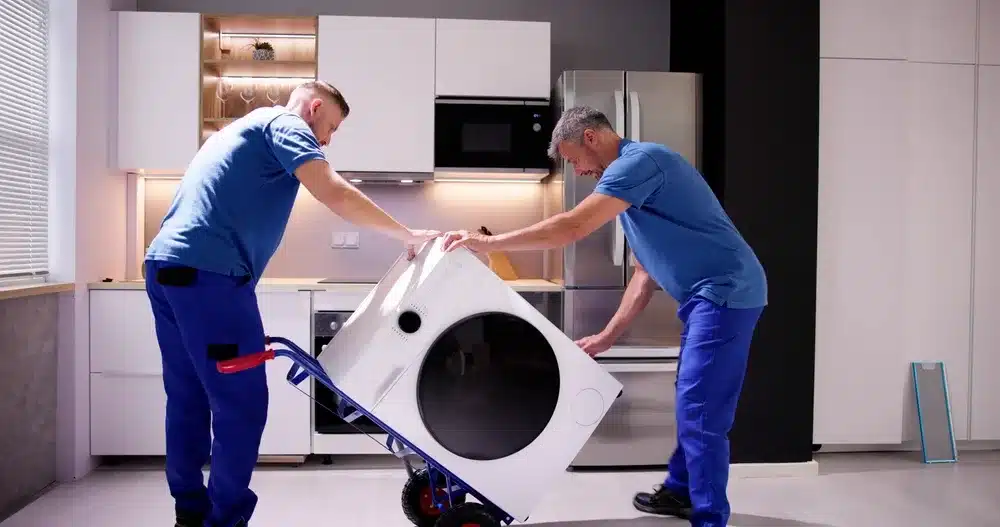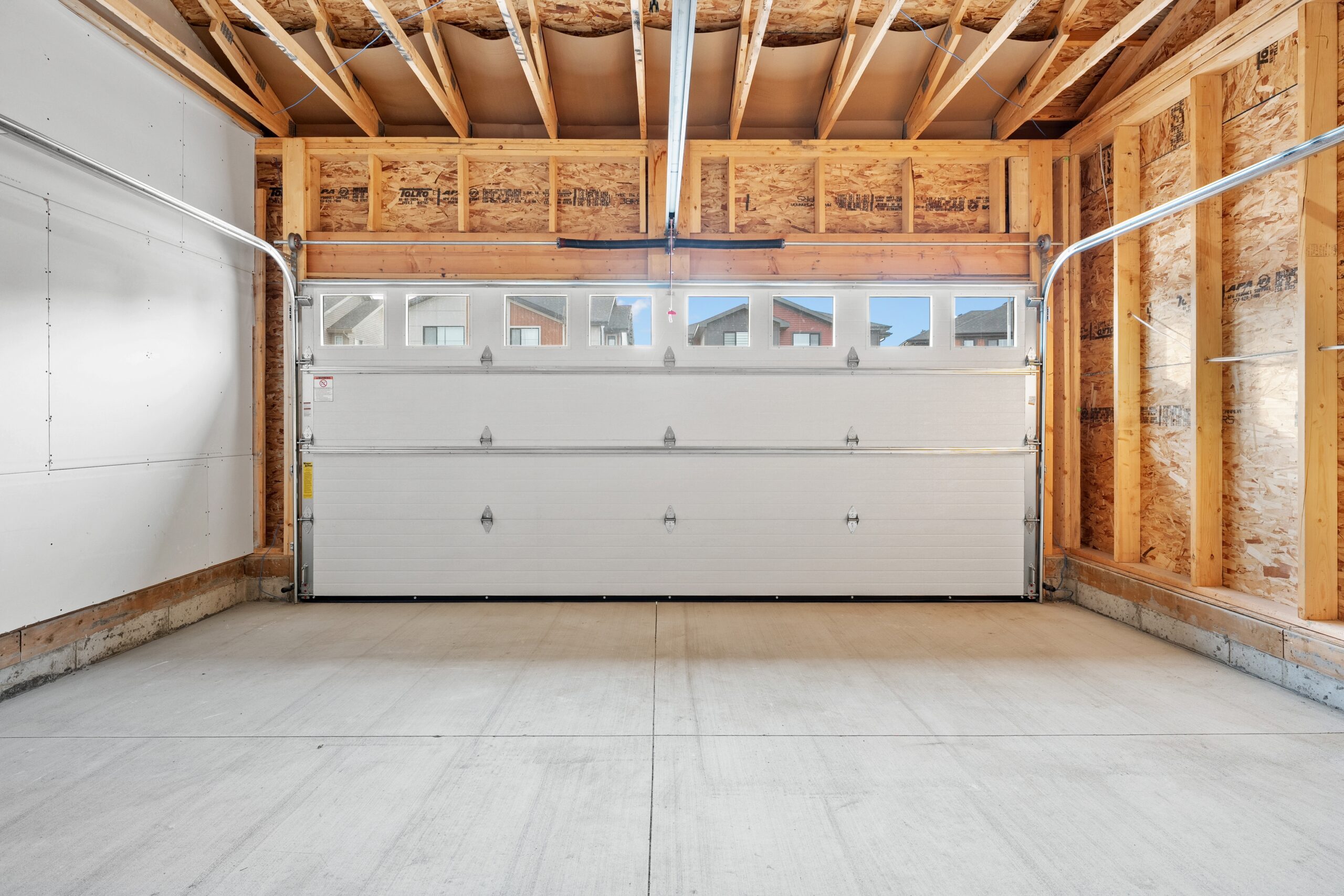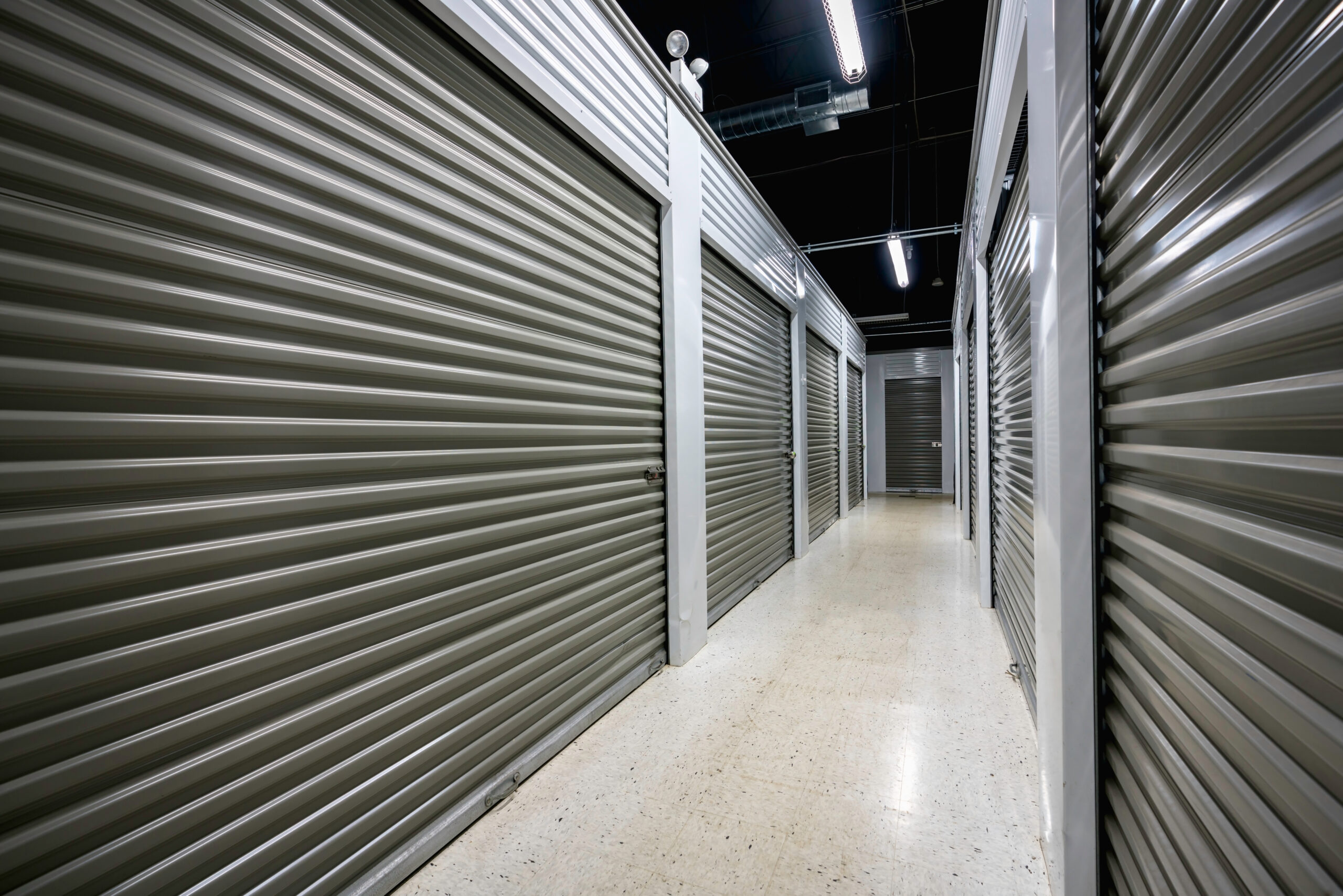Your washing machine and dryer work hard every day, but what happens when they need a break? Whether you are moving, remodeling, or storing them while you travel the world, you can’t simply unplug them and walk away. If you want those expensive appliances to survive your long-term storage plans, you need to know how to store them correctly and prevent irreparable damage.
Follow these simple steps to keep your washer and dryer in optimal condition. This way, they will be ready when you need them again.
Step 1. Clean and Prepare the Appliances
All storage processes start with a good cleaning, and storing your household appliances is no exception. First and foremost, clean the washer and dryer both inside and out.
Here’s a helpful checklist for the cleaning and preparation stage.
- Wipe down all outside surfaces with a slightly dampened cloth, followed by a dry cloth.
- Focus on high-buildup areas: control panel, knobs and door handles.
- Run an empty hot water cycle with white wine vinegar or a washing machine cleaner to remove detergent residue and bacteria.
- Clean the detergent compartments and filters until you are certain they are residue-free.
- Dry the detergent compartments and filters of the washing machine.
- Remove and clean the lint trap in the dryer for storage with warm, soapy water.
- Wipe the inside of the dryer with a damp cloth to remove dust, lint or other debris.
Pro tip: Residual water leads to the growth of mold, thereby causing potential damage to your appliances during storage. To prevent this, open the doors of both appliances for an adequate time (24 hours). This will let air circulate and help moisture evaporate completely.
Step 2. Disconnect the Appliances
To avoid any potential damage or safety hazards, disconnect your washer and dryer following these steps:
- Turn off the water supply valves connected to the washer (both hot and cold).
- If you have a gas dryer, also turn off the gas valve.
- Switch off the electricity breakers on the washer and dryer and unplug the electrical wire from the electrical outlets.
- Place a bucket or large container next to the washer to catch potential spills.
- Disconnect the water supply hoses from the back of the washer, using pliers and/or a wrench. Begin with the hot water hose, and place the container beneath the hoses so the remaining water can drain.
- Open the washer door and manually drain off any water left in the drum. You can use a small cup or a scoop to take water out of the drum. You can also use towels to soak up any leftover water.
- Clean the outlet pipe and the drain socket for thorough water removal.
Here’s a quick table to help you keep track of this process:
| Task | Details |
|---|---|
| Turn off water and power | Shut off valves and unplug appliances |
| Drain remaining water | Disconnect hoses and drain/absorb water from the drum |
| Final drying | Leave doors open to evaporate residual moisture |
Step 3. Secure and Protect the Appliances
Once everything is clean and dry, you just need to secure and protect your washer and dryer for transport and storage to avoid risk of damage.
- If your washing machine has drum locks or transit bolts, use them to secure the drum. Manufacturers typically include these with the appliance when new, and they design them to prevent the drum from moving during transport. If they are not an option, place furniture blankets inside the drum to minimize movement during transit.
- Use duct tape to secure detachable components, like the washing machine door or the detergent drawer. This will keep them from opening during the move.
- Coil the water supply hoses and power cords, and place them inside the washer or dryer. If the hoses cannot be disconnected, tape them down securely to avoid damage during transport.
- Wrap the washing machine and dryer in a blanket, bubble wrap, or cushions. This will help prevent scratches and dings during storage and transport.
- Avoid using airtight plastic covers over your washer and dryer, as these hold in moisture, which will cause mildew or mold. Instead, use breathable materials like cloth or specially designed appliance covers. You can also cover them with cardboard to protect them from direct sunlight and potential damage.
- Before transport, double-check that all tapes, bolts and covers are secure.
Pro Tip: If you have to remove any parts, label them clearly with painter’s tape and keep them with the appliances for easy reassembly later.
| Task | Details |
|---|---|
| Secure moving parts | Use drum locks or blankets and tape loose parts |
| Use protective covers | Wrap with blankets or bubble wrap and avoid airtight covers to prevent growth of mold |
| Final check | Ensure all fastenings and covers are secure before transport |
Step 4. Choose the Right Storage Unit
All wrapped up and ready to go but where to? Maintaining the condition of your washer and dryer during long-term storage depends on a few factors. Some of them include storage unit features and dimensions, while others relate to how you store them.
- Your appliances and any electronic devices need a stable temperature and humidity. This helps prevent rust and mold. This means you should choose a climate-controlled storage unit to avoid extreme temperatures, especially if you live in an area where the difference from summer to winter is huge.
- If climate control is unavailable, place silica gel packets or other moisture absorbers inside the storage unit to protect against moisture buildup.
- Keep the washing machine and dryer off the ground on wooden pallets, sturdy cardboard or some other type of elevated platform. This way, you avoid potential water damage from condensation, leaks or flooding.
- Store the appliances with the doors slightly open to allow air circulation. This helps prevent mold and mildew from forming inside the machines due to trapped moisture.
- Do not stack heavy items on top of the washer or dryer, as this can cause dents or damage to the appliances. If you really can’t keep the area above them clear, only place lightweight items.
- Place the washer and dryer in a low-traffic area of the storage unit to minimize the risk of accidental damage.
Here’s a quick recap to make it all easier:
| Task | Details |
|---|---|
| Climate-controlled storage | Stable temperature and humidity prevent rust/mold |
| Use moisture absorbers | Place silica gel packets or similar products |
| Elevate off the floor | Use pallets or cardboard to prevent water damage |
| Leave doors slightly ajar | Promote air circulation, prevent mold/mildew |
| Avoid stacking heavy items | Keep the area above appliances clear |
| Select a secure location | A low-traffic area near the back of the unit |
Step 5. Move the Appliances
Now that you have rented a storage unit and planned what will go into it and where, it’s time to get ready for the big move.
- Use an appliance dolly to help you move the washer and dryer. This saves you from injury and also avoids tipping and damaging the appliances while moving.
- Fasten the washer and dryer to the dolly with secure straps to keep them stable while moving.
- Keep the appliances upright during the entire moving process, including loading and unloading, to prevent damage to internal components.
- Once inside the moving truck, secure the washer and dryer with ropes and straps so they won’t move around.
- Pad the appliances further with extra blankets so they won’t knock into each other or the sides of the moving truck during transit and avoid .
This was your last hurdle in the whole moving process and this is how it can be summed up:
| Task | Details |
|---|---|
| Use a dolly and straps | Prevent injuries, avoiding tipping or damage |
| Avoid tilting the appliances | Maintain an upright position in storage or moving truck |
| Secure the appliances | Use ropes or straps to prevent shifting |
| Add extra cushioning | Protect from bumps and scratches in the truck |
Tip: If you’re also moving a kitchen appliance like a range or oven, check out this guide on how to move and store a stove to avoid common mistakes and ensure it stays in great shape during transport and storage.
Conclusion
Properly storing your washer and dryer doesn’t have to be a hassle. By following these simple steps—cleaning thoroughly, disconnecting safely, and choosing the right storage conditions—you can avoid potential damage and keep your essential appliances in optimal condition for the long haul.
Whether you’re between homes, remodeling, or simply freeing up storage space, self storage can be the ideal solution. Use Storage.com to compare storage facilities near you and find the perfect storage unit for your washer and dryer today.






